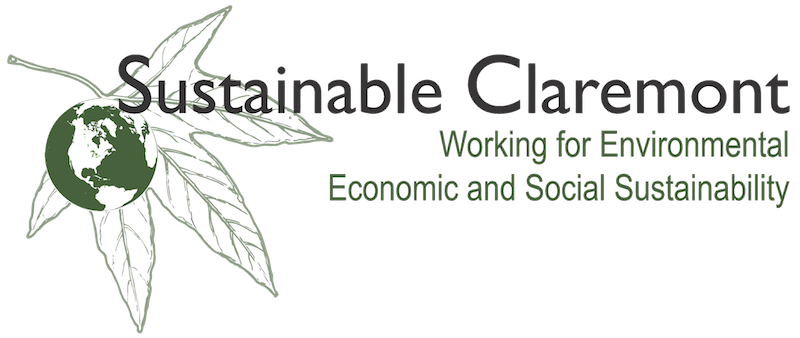Global warming is arguably the greatest problem humankind has ever faced. What should we do about it? That was the subject of the Brave New Planet conference held in Claremont last month. Bill McKibben and David Orr were key participants. They spoke to very different approaches. As the Courier reported last week, Bill McKibben saw the need for an organized movement and created 350.org — the odd name based on the maximum acceptable level of greenhouse gases in the atmosphere. He started in 2007 with seven students at Vermont’s Middlebury College. Each took on a continent. Two years later they had inspired more than 5200 organized protests in 181 countries.
At the same time David Orr at Oberlin College was considering how to preserve Earth as a habitable planet — how to establish a fair, decent, resilient, prosperous and durable global society as we face global climate change. Oberlin, Ohio, a city in the “rust belt”, was suffering from the economic downturn. In the summer of 2009 the College joined with the City to create the Oberlin Project, “A Collaborative Venture Among Oberlin College, the City of Oberlin, Oberlin City Schools and Private Sector Organizations to Build a Prosperous Post-Fossil Fuel Based Economy”. The aim was to mobilize an integrated response that would revitalize the local economy, reduce carbon emissions, restore local agriculture and forestry, and to use the effort as an educational laboratory relevant to virtually every discipline. A Core Planning Group was formed, with input from committees considering economic development, energy planning, education, the greenbelt, funding, policy, community engagement, and so on. The ambitious Project, now being implemented, includes a 13-acre Green Arts District built to meet the highest environmental standards, new business ventures, a shift to renewable energy sources, revitalization of a 20,000-acre agricultural green belt, and an educational alliance between Oberlin schools and the College. There are also efforts to replicate the Project at varying scales in different regions through a national network of diverse communities and organizations with similar goals, perhaps in every Congressional district.
Through the generosity of the organizers of the Brave New Planet Conference held in Claremont recently, David Orr was released from his Conference responsibilities to meet at City Hall with Claremont’s Sustainability Committee and other members of the community. He spoke of the urgency of responding to the challenges of global warming, of the Oberlin Project, and most importantly joined in a discussion of how communities such as ours should respond. For Claremont he suggests asking local institutions and organizations to consider what their priorities for action would be — those things they believe would have the most impact. Then to work together through a central organization, as they did in Oberlin, to plan and implement the projects — working with surrounding communities sharing our aquifer and watershed, or maybe our entire congressional district, to create new jobs and bolster local economies. Should we accept the challenge? One of our City Council members is already meeting with potential Congressional representatives to consider Claremont’s role. The head of the Colleges’ Environmental Analysis Program, responded "wonderful meeting — I know we'd like to get this going — so if Sustainable Claremont wants to be the good-faith broker there is already a collection of faculty eager to pitch in".
Shall we create a “Claremont Project”? It’s a daunting prospect, but the benefits could be immense. What do you think? And how will you help?
Demystifying Sustainability is an initiative of Sustainable Claremont (sustainableclaremont.org).
